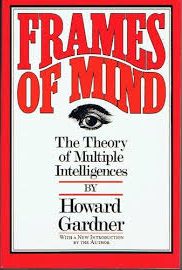Multiple Intelligences Newsletter, Vol 26, No 4
January 12, 2018
Happy New Year, MI Fans,

The question posed in the last issue, “Who was the smartest person in your high school graduation class?” generated some fun discussions. Too often we view intelligence as an abstraction, a two- or three-digit number that indicates one’s ability to solve problems. It’s understandable that we might think like that; after all, the curriculum, instruction, and assessments in most educational institutions are designed around that premise. Whether it’s IQ, SAT, ACT, ERB, GPA, or whatever, having a presumably objective and reliable number from which to make decisions is easy (and comforting) for educational leaders.
But when we look around us and see who is solving problems and the skills that they are using, how we define intelligence – problem-solving ability – becomes much more complex. That’s the power of MI. The theory of multiple intelligences is a pragmatic theory: it captures how problems are solved in the real world, not just on a piece of paper filled with bubbles.

In fact, Gardner did more than infer from observing people who are successful. He used a set of criteria in determining what constitutes an intelligence, including potential isolation by brain damage, existence of savants and prodigies, development history, evolutionary history, psychometric findings, experimental psychological tasks, an identifiable set of core operations, and susceptibility to encoding in a symbol system. These criteria view intelligence as much more varied and complex than the way it is typically viewed in schools. Too often the connection between success in school and success in life is weak. As further evidence, here’s an article from Business Insider that supports this contention, “Why High School Valedictorians Don’t Become Really Successful”: Valedictorians?
Finally, to keep it all in perspective, yes, students do need to be taught to read, write, and calculate. Further, many smart and talented people were on the honor roll and were valedictorians of their classes and became successful adults (however success is defined). But we should view these kinds of talents – really, strengths in the scholastic intelligences – as only one aspect of what can enable people to be successful. As educators, we must take into consideration our students’ intelligence profiles and how they learn. This means that we must go beyond looking at how students read, write, and calculate; rather, we must consider how students learn. Using MI to teach is student-centric! That is explained in one of my Educational Leadership columns, Multiple Ways to Learn.
What could be more student-centric than addressing how students learn when we design curriculum, teach, and assess?
